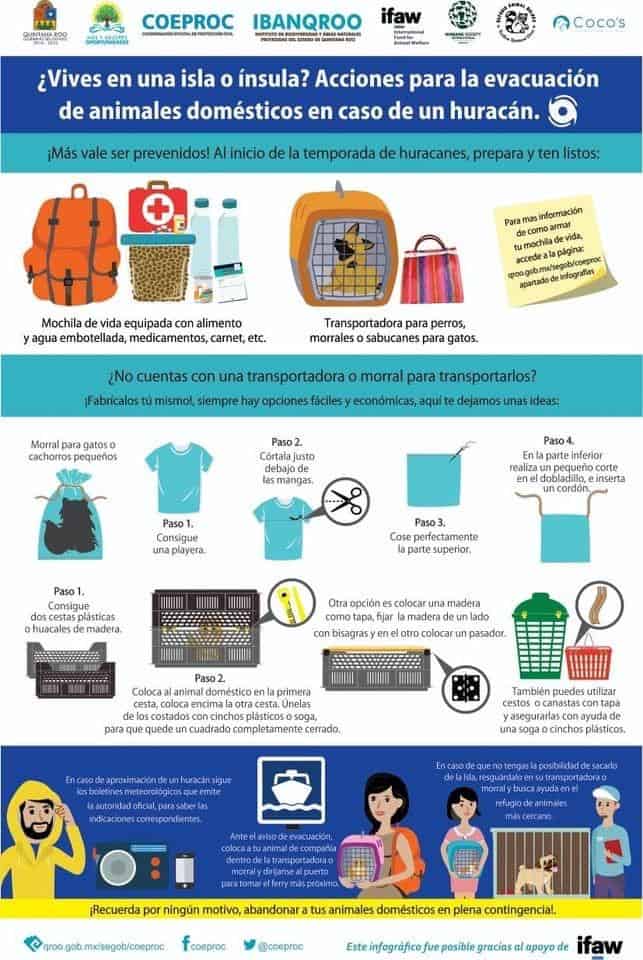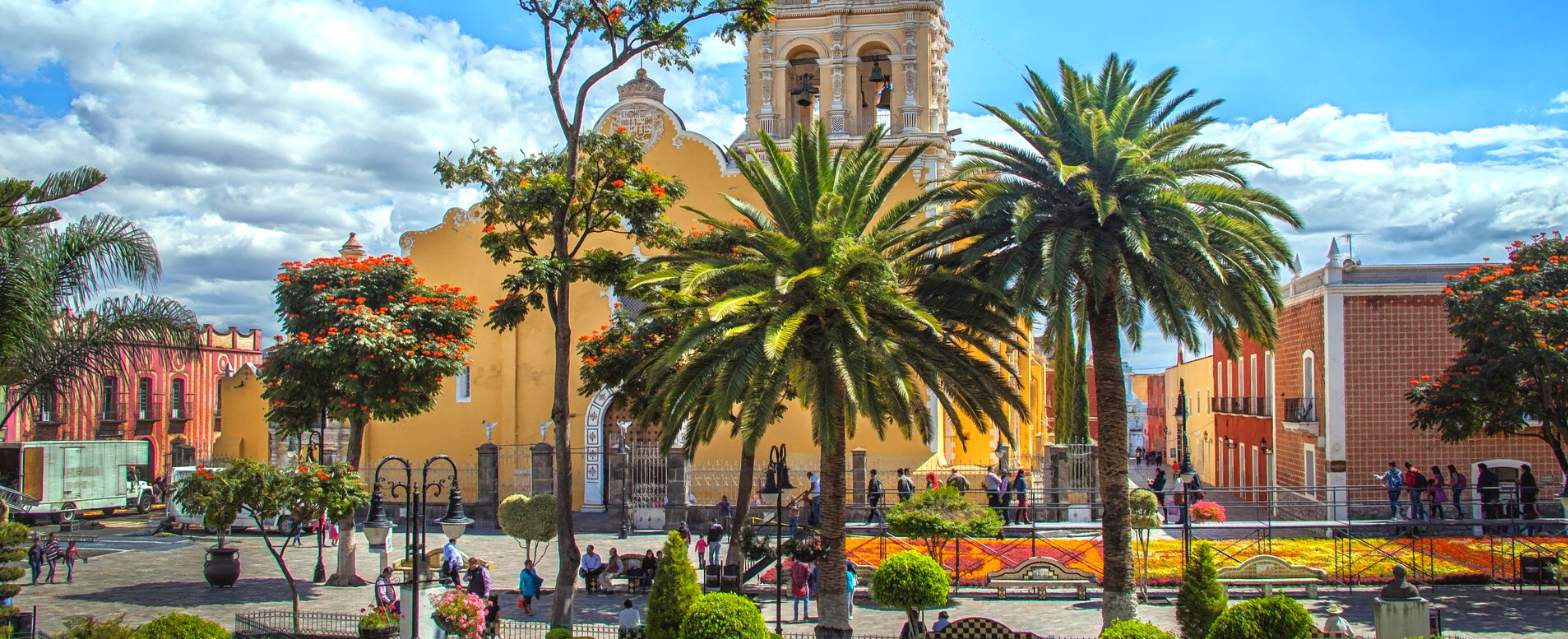As we approach the middle of May and through November Hurricane Season here in Mexico is upon us.
In most parts of Mexico, the biggest storms tend to form in October. However, Mexico is a big country where hurricanes, typhoons, and tropical storms can arrive on either coast or come in from the Gulf of Mexico at any time.

There is nothing predictable about each storm. Depending on the landfall location, I’ve experienced storms with zero leaks to mopping up water for the duration. And you may have never been exposed to a hurricane, so preparing is key.
Here are 8 things you can do to prepare for a hurricane in Mexico.
1. Stay Informed
The first step in Hurricane preparedness is to stay informed.
Before a storm, state and local Governments issue color-coded advisories and warnings based on the estimated time and distance from landfall.
A good Twitter account to follow is Conagua- the National Meteorology Service. Or your local government’s Twitter feed is also a helpful resource.
Alerts range from Azul the lowest alert, then three intermediate stages green, yellow, and orange, and finally, the highest alert, Red, meaning emanate danger.
State and local authorities will issue warnings by the time of approach to make landfall
The intensity of the storm or Category (Promedio de escalas) is located to the right of the chart and the intensity of Alert is read left to right or right to left according to the estimated arrival time or distance. In either case, the severity and timing of alerts raises with the intensity of the storm.
2. Level of Alerts by Color.
- Alerta Azul – Lowest Level of danger, remain vigilant. Updates every 12 hours.
- Alerta Verde – Second level of alert that there is the probability of an event; remain vigilant. Updates every 12 hours.
- Alerta Amarilla- Third level of alert, the moderate danger of an event, and preparations should begin for an event. Updates every 6 hours.
- Alerta Naranja- High probability of an event -Danger. At this level of alert, you should have a clear plan of evacuation if ordered, know your refugee sites, and all of your supplies and measures in place to ride out the event. Many Municipalities will issue a stop-work order, and businesses will be told to close down at a specific hour. Updates every 3 hours.
- Alerta Roja- Maximum Danger. Landfall is imminent. Shelter in place. Updates every 3 hours.
- Regardless of which chart is used, the same levels or colors are used to inform the general population.
- It is important to know that as a Tropical Storm or Hurricane approaches, wind and rain may begin to appear long before you get to the Alert Roja stage. Ferries and other maritime operations may be suspended at any stage, not only in coastal towns but in lakeside towns as well.

3. Resources To Follow
These Advisories and warnings are disseminated at intervals by color through local radio and TV as well as social media.
Here in Playa del Carmen, a good resource is the Facebook page of your Municipality. Ayuntamiento de Solidaridad is a local page for Playa del Carmen. You should check and subscribe to the Facebook page of your particular Ayuntamiento (Municipality).
Another good resource is the Governor of your particular state’s Facebook and Twitter accounts. In our case, this is Carlos Joaquin.
You can also monitor COEPROC (Coordinación Estatal de Protección Civil) for your area. NOAA is also a source of information but rarely provides local info for Mexico.
Get our Free Email Series About Living and Retiring in Mexico! Learn more.
4. What to Expect During A Storm
Whether the forecast is for a Hurricane or Tropical Storm, you can expect a lot of wind and rain.
The norm is fallen trees flooding low-lying and poor drainage areas and severe beach erosion.
Broken electrical wires will generally interrupt your power, internet, cell phone service, and water if you rely on electric pumps.
Periods of outage can last for just a few hours or days, depending on the severity of the storm and the damage it has caused. If you happen to live in any of the newer fraccionamiento (neighborhoods), all utilities are underground, and it is rare to lose power for longer than momentarily to a few hours.
Areas with overhead electric supply are usually the hardest hit. The rule should be to plan for the worst and hope for the best.
5. How to Prepare Your Home
Now is the time to catch up on your home’s structural maintenance. All those chores you put off, the tiny leaks, and damaged windows will come back to haunt you in a big way during a hurricane.
- Check your windows and door seals. In this climate, caulking breaks down very easily. It dries out and cracks, allowing water to penetrate easily. In my first tropical storm, the windows leaked like a screen door on a submarine. Scraping off and replacing the caulk saved me hours of cleanup during subsequent storms.
- If you have Mini Split AC Units, ensure they are securely bolted to their bases. It’s not uncommon to see compressor units blown completely off the roof if unsecured.
- If you have a stationary gas tank, make sure that it is secure and the gas lines as well.
- Check your roof for cracks and failures in the membrane or roof tiles that will allow water to penetrate. If you have a small roof leak now, you can guarantee it will be a major leak in a storm with wind-driven rains.
- Check your roof for any debris and remove it before the storm so that water will not pool on the roof or become airborne.
- Check your roof drains to make sure they are free of debris and not clogged.
- If your pets sleep outside, make sure they have shelter. Bring them indoors
6. Personal Preparations
Once Alert Naranja is announced, you should begin personal preparation.
- Food (including dry goods)
- Medicine
- Candles
- Flashlight with fresh batteries
- Radio
- Extra drinking water
- Extra pet food
- Reserve water for flushing toilets
- Ice and anything else you need to obtain for 2-3 days should be secured.
- Ensure you have fueled up your vehicle, gas pumps run on electricity, and gasoline may not be available in an extended outage.
- Check the level of your Stationary Propane Tank for cooking so that you have ample fuel for cooking.
- Safeguard your important papers, such as passports, insurance policies, etc, in case you need to evacuate or flooding occurs.
- Prepare your Hurricane shutters if you have them.
- I also highly recommend having a generator if you live in a hurricane-prone area.
Locate the most structurally sound place if your home in case of structural failure. - Finally, check your outdoor spaces for items that will go airborne and cause damage to either your property or others.

7. During The Storm
Above all remain calm.
You will hear sounds produced by the wind and rain you have never heard before. Have mops, towels, and buckets at the ready if needed. Close your curtains in case of glass breakage.
Make rounds of the interior of your home to spot leaks or other perforations on a routine basis. Storms don’t always occur during the daylight hours, If you lose power, have your alternate light sources such as candles and a flashlight handy.
Avoid opening your fridge to allow the cold air to escape. If you have electronic ignition on your stove have a lighter or matches handy as it will not ignite if electricity is out.
8. After the storm.
After an event, the government may opt to keep the Red Alert in place until services can be restored or it is safe and feasible to move about.
At some point, they will issue the All Clear. Although it is tempting to go out and explore after a major storm, try to stay off the roads as much as possible. Fallen electrical lines can kill you. Roads may still be inaccessible due to flooding and broken trees. If you must venture out do so with caution.
Mexico takes these types of storms very seriously as it is no stranger to the destruction these storms can leave in their wake.
Don’t take chances. Pay attention to the warnings and prepare accordingly. It is very important to understand Mexico is not the US where unlimited resources are thrown at disaster aftermath. Limited resources coupled with a language barrier and a perception of a slow response may frustrate you. It may take a little longer but life will go back to normal.
This isn’t meant to scare you. In fact, it’s the opposite. To be prepared is to be safe!






Hi Mariana, We are planning a “fact finding” tour to Puerto Vallarta in a few weeks to determine if it is for us. We are 86 87, in good health & are thinking of relocating there, if our findings are favorable. We have travelled extensively throughout Baja & Mexico & love the country very much. We have signed up for the newsletter. What does the online course consist of?
Waiting to hear from you.
Hi guys
Our COMPLETE Relocation Guide has a variety of instructions on topics like
residency visas
bringing pets to Mexico
driving to Mexico
getting the best rentals
Steps to securing a rental
How to bring household goods
Just to name a few
Here is a video with an inside look
https://www.youtube.com/watch?v=WL-U6cIs0Bw
keep in mind this was recorded in October and I have added a lot of information since then
We also connect you to our recommended tour guides in Puerto Vallarta (and around Mexico) that can show you around, answer your questions, show you rentals, grocery stores, and help you get connected
Here’s more info
Mexicorelocationguide.com/guide/